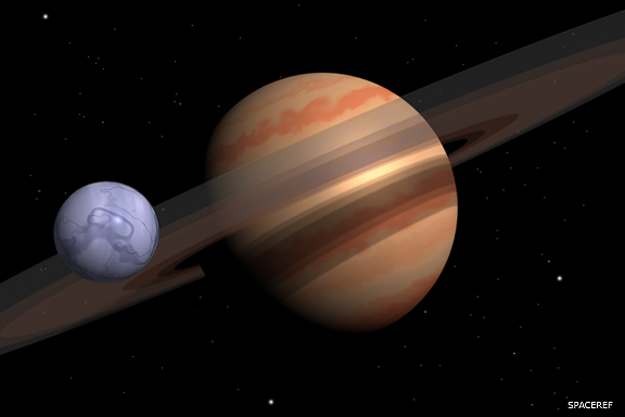In our solar system formation of ice moons was pretty common in the outer solar system with the big planets.Shrinkage of Jupiter will coincide with melting of ice - life developing on water worlds has limited technology (nothing electrical) - habitation by us limited to floating and/or submarine structures - but also loss of mass by Jupiter (or any gas giant) will affect moon orbits, almost certainly causing loss of moons, or at the very least causing insecure orbits.
As the habitation zone slowly extends to include Jupiter, it will take probably millions of years for the ice to melt and the H/He etc to dissipate. (After ~5 billion years, how long does it take for the Sun to expand - I need to check this and look at this again.)
In approximately 5 billion years, the sun will begin the helium-burning process, turning into a red giant star. When it expands, its outer layers will consume Mercury and Venus, and reach Earth.27 Mar 2018
Red Giant Stars: Facts, Definition & the Future of the Sun | Space
Doesn't say how long between starting and ending expansion phase, BUT . . . . . . . . .
Will Earth survive when the sun becomes a red giant? - Phys.org
https://phys.org › Astronomy & Space › Astronomy
"When the sun does begin to expand, it will do so quickly, sweeping through the inner solar system in just 5 million years.
It will then enter its relatively brief (130 million year) helium-burning phase, at which point, it will expand past the orbit of Mercury, and then Venus. By the time it approaches the Earth, it will be losing 4.9 x 1020 tonnes of mass every year (8 percent the mass of the Earth)"
Cat )
Other solar systems with just a bit less water or more rock or location and movement of big planets and we get totally different moons and different big planets.
Still going to be a big hunt for a tech society on one of the billions of moons but I don't think such a giant hunt for life of some format and easy to detect signs of it.
Seems like far better places to hunt for life than just Earth size worlds in the HZ and the long list of needs they have.



